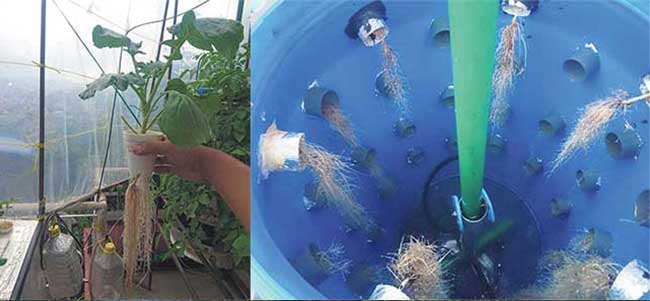KATHMANDU, Jan 3: Do you feel that the price of vegetables is increasing by the day? If so then rooftop farming can be the best solution for your problem. Rooftop farming could be the best available option, considering you have some open space, for greenery and some organic vegetables.
In any highly populated city, one of the main issues is constantly increasing price of agricultural produce and their poor quality. Though Nepal is an agricultural country, where agriculture is the main source of income, our agricultural products are not enough even for the local population. Growing urbanization in cultivable lands and migration to central cities might be the main reasons behind the gradual fall in production of crops.
According to the data of economic activities at Nepal Rastra bank, cultivable land in Nepal has decreased by 30,334 hectares in the fiscal year 2016/17. Hence, rooftop farming can significantly contribute to decrease the import of agricultural products from other countries. Vegetables and fruits like spinach, spring onion, coriander, spring garlic, strawberries, guava, oranges, and tomatoes can be produced through rooftop farming.
 Rooftop farming comprises various techniques, including Aeroponic Agriculture (agriculture done in air without soil), Hydroponic Agriculture (agriculture done in nutrient solution without using soil) and traditional agriculture (agriculture done in soil), among others. Meanwhile, traditional rooftop farming can be done with the use of different mediums like containers, plastics bags, bottles, while you can also turn your entire roof into a farmland by waterproofing the concrete.
Rooftop farming comprises various techniques, including Aeroponic Agriculture (agriculture done in air without soil), Hydroponic Agriculture (agriculture done in nutrient solution without using soil) and traditional agriculture (agriculture done in soil), among others. Meanwhile, traditional rooftop farming can be done with the use of different mediums like containers, plastics bags, bottles, while you can also turn your entire roof into a farmland by waterproofing the concrete.
Balen's Posthumanist Vision for the Mindfulness City

One of the main specialties about rooftop farming is that you can also grow unseasonal vegetables and fruits through the green house effect. Rosy Maharjan, trainer of a project named ‘Phohor Maila Bewasthapan Ko Lagi Pratifal Ma Aadharit’, said, “Small families can easily produce enough vegetables for themselves through rooftop farming if it is done in a scientific way.” The project has been providing training on rooftop farming, waste segregation and composting to the residents of Lalitpur Metropolitan City.
Maharjan added that hybrid breeds of fruits are also available in market, which can be grown in a simple pot on your roof. “People don’t have to waste a lot of money for rooftop farming, household materials such as perforated water jars, bottles, plastic bags and pots can be used for cultivation. If waterproofing and drainage of the roof is good, the farming can also be done for longer period of time,” Maharjan said.
Garden designer at Paknajol-based Kumari Nursery and trainer of rooftop farming, kitchen gardening as well as floriculture, Sesh Maharjan, said people should know that a medium between mud and concrete, like pots or any insulating materials, is a must while doing rooftop farming.
Rooftop farming is quite different from land agriculture because the load and moisture of mud can damage the concrete of the roof. Hence training is necessary before starting rooftop farming, said Maharjan. The weight of mud used in rooftop farming can be decreased by 45 to 50 percent by mixing it with different materials such as straw, compost manure and sand. Maharjan said if rooftop farming is done in a scientific way, the production could suffice an entire family.
Waste management is also one of the reasons for an increase in the trend of rooftop farming because people can use 50 to 60 percent of the household wastes as compost manure. If you’re thinking of doing rooftop farming, it is vital that you insulate the concrete first before laying mud on your roof. Six to eight inches of light mud with good drainage should be enough to begin your agro-adventure.
With an innovative vision of creating a pesticide-free future, a group of three people — Caesar Rana, Prakash Dahal and Biplove Singh —established Aeroroots Pvt Ltd to introduce Aeroponic farming. This kind of farming is being practiced for the first time in the history of Nepal. Aeroponic farming is a process of growing farm vegetables and herbs with less than one tenth of water and no more than nine percent of the farmland required by traditional agriculture to grow the same quantity of produce.
Aeroroots Pvt Ltd employs a new system of growing plants called Aeroponics with the use of a drum containing 60 holes called bends. Each hole contains sponge to hold the roots and water nutrients, while an automatic machine sprays water through a nozzle. CEO of Aeroroots Pvt Ltd Singh said aeroponic farming was the perfect kind of rooftop farming as the process involves less use of soil, resulting in fewer loads.
This kind of farming also prevents different parasitic diseases like ascaris and hookworm that transmit through soil. Singh said, “Vegetables and fruits produced through this method are highly nutritious in comparison to those produced through traditional farming.”
Aeroroots Pvt Ltd currently offers aeroponic vegetables like cauliflower, bitter gourd, cucumber and garlic among others. The aeroroof consumes only 10 to 20 liters of water per week and electricity below 20 watts. Each aeroroof comes along with a manual and costs Rs 75,000, but the cost will be recovered within six to seven months, said Singh.
The CEO-trio is an example of how innovation and out of the box entrepreneurship skills can solve even the most pressing problems. Aeroroots Pvt Ltd has two labs at Kalanki and Baneshwar and one farm at Godawari at present. With people migrating to bigger cities like Kathmandu in search of better facilities and opportunities, rooftop farming can be the only option to become self-sufficient in cities that offer negligible cultivable lands as well as expensive vegetables.

































